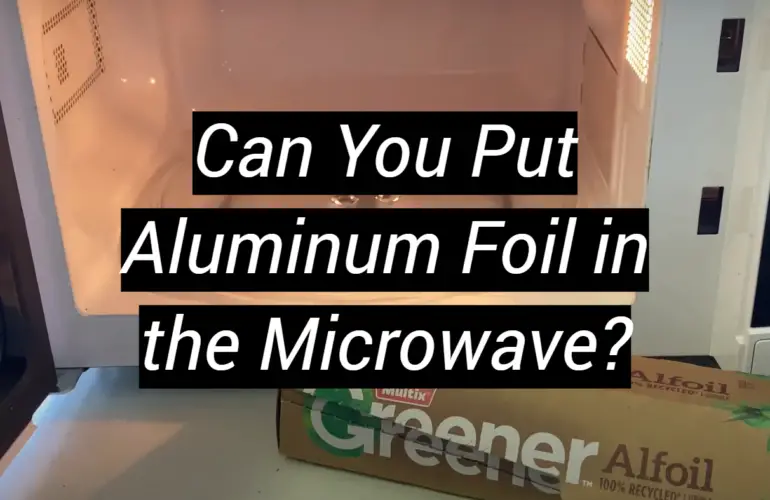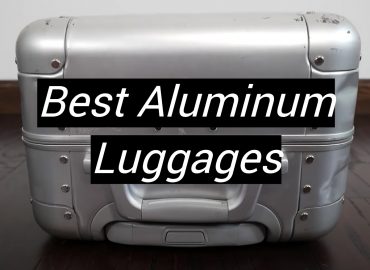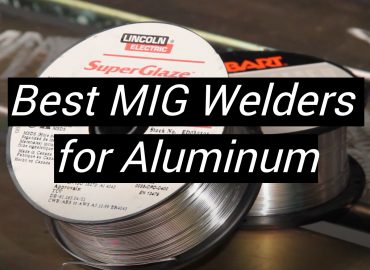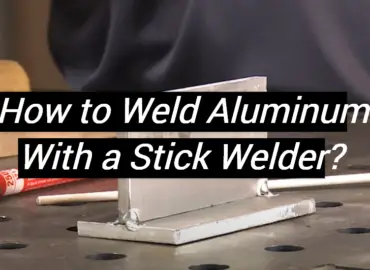There has been a long-standing debate about whether or not aluminum foil is safe to put in the microwave. People have their own opinions and theories, but how do we know what is right? Is it really safe to use in the microwave, or could doing so cause danger?
In this blog post, we will dive into the background information regarding using this material for cooking purposes and discuss all potential risks associated with it. We will also explore workflows that allow you to safely use such a kitchen tool, so you can make an informed decision when faced with such a dilemma. With all of this knowledge at hand, you’ll be able to feel confident deciding if putting aluminum in your oven is something you should or shouldn’t do.
What is the Microwave Working Principle?
Nowadays, people’s lives are so fast that many simply don’t have enough time to cook. In this situation, modern household appliances, such as microwaves, come to the rescue. They can not only quickly heat food, but also prepare semi-finished products fast.
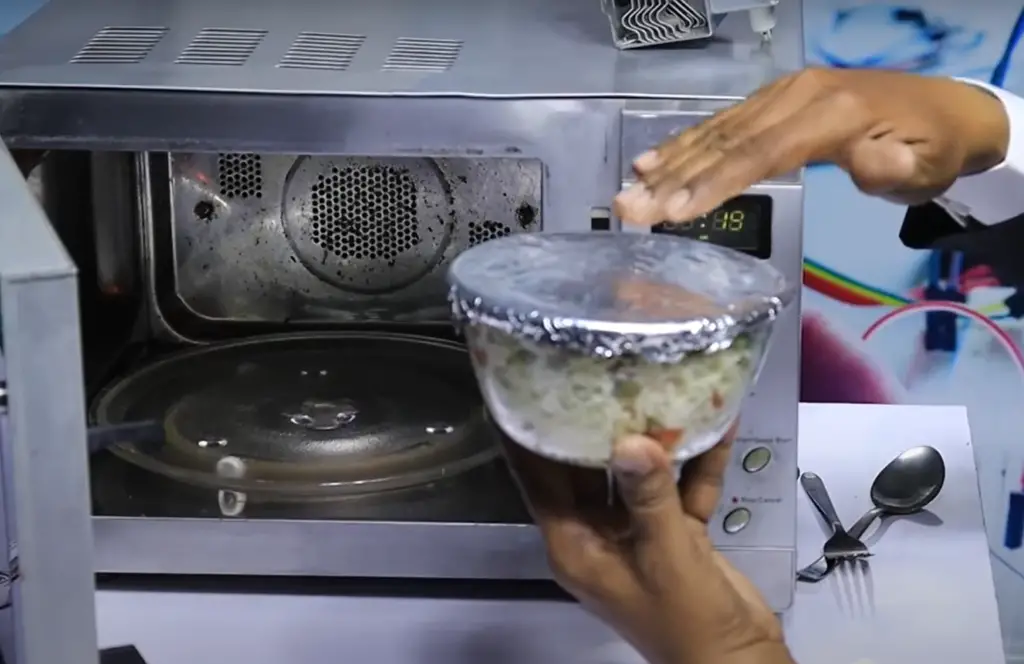
The microwave is a staple in many homes, and it works by using electromagnetic radiation.
The microwaves produced in the oven are absorbed by food, water, fat and sugar molecules, which causes them to move quickly and produce thermal energy or heat. This is how microwaves cook food so quickly compared to stove-tops or other conventional methods of cooking.The microwaves are generated by an electron tube called a magnetron and travel through a waveguide into the oven where they are reflected off metal walls and absorbed by the food contained within. That’s in simple terms. [1]
If we want to understand the principle of operation in more depth, it is worth clarifying the following. The main element of any microwave oven is a magnetron. This device generates microwaves, which heat the food. In order for microwaves to produce a cooking effect, dipole molecules must be present in the food. That is, molecules that have both a positive and a negative charge. They are abundant in vegetables, fruits, and meat.
In a normal environment, when they are not affected by an electromagnetic field, dipole molecules are in a chaotic state. But as soon as the magnetron is turned on in a microwave oven, they line up in a certain order: positively charged ones move in one direction, and negatively – in the other. At the moment of polarity change (charge from positive to negative), the molecule changes direction by 180 degrees.
That is, in fact, the magnetron generates an electromagnetic field that makes the molecules in the products move faster, creating an additional friction force between them, which causes them to heat up. [2]
What is Aluminum Foil?
Aluminum foil is a thin, malleable material made of aluminum. It can be used for various purposes including cooking, wrapping food for storage and insulation. People commonly apply aluminum foil to facilitate cooking or reheating food in microwaves. Aluminum foil is also useful for reflecting heat or light, which makes it ideal for wrapping and storing food in the refrigerator.
Foil has a number of advantages:
- First, it can help keep food fresh by sealing in moisture and flavor. It also prevents contamination, as it acts as a barrier between the food and any bacteria or other contaminants that could be present in the air.
- Second, it helps to speed up the cooking process by trapping and reflecting heat.
- Third, aluminum foil is very easy to use and can be cut or shaped into any size or shape as needed.
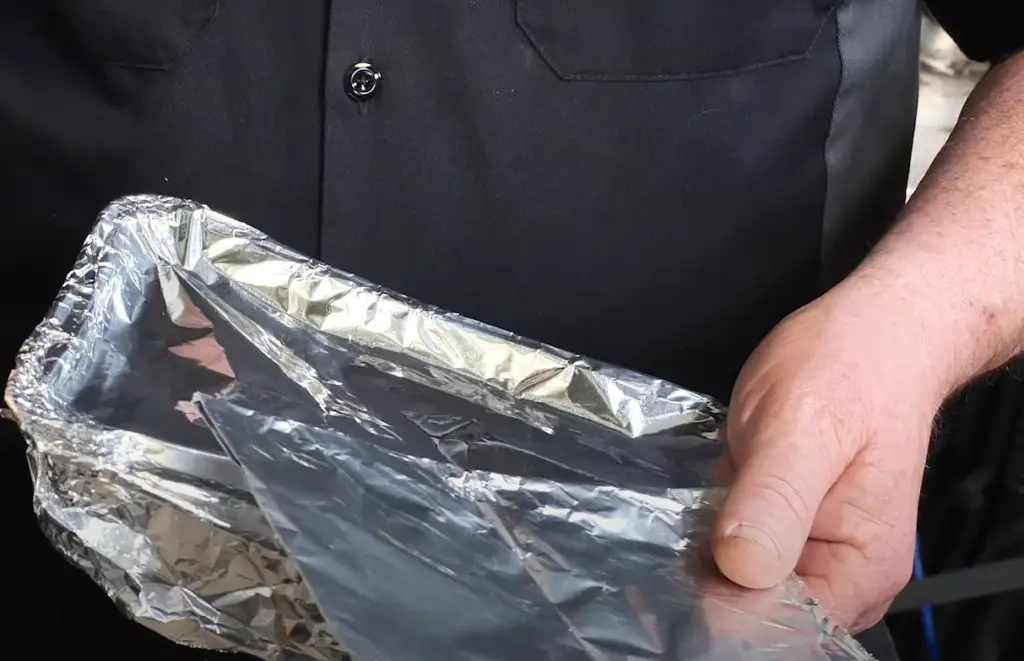
Aluminum foil is chosen because of the next properties:
- Thermal tolerance. It can withstand high temperatures as well as freezing.
- Heat reflection. Aluminum foil reflects up to 97% of radiant heat, meaning that it can help speed up the cooking process.
- Non-reactive properties. It does not react with food or other substances like some plastics do.
- Lightweight and easy to handle. Aluminum foil is light and flexible, making it easy to use in small spaces such as ovens or microwaves.
- It is a conductor of both heat and electricity.
- Aluminum foil is highly environmentally friendly.
- It is impervious to water. It is resistant to water and moisture.
- This foil is non-toxic.
- It is resistant to corrosion. [3]
While aluminum foil is generally considered safe for use in the kitchen, care should be taken when using it in the microwave as its reflective properties may create sparks and cause fires. Therefore, always make sure to follow manufacturer instructions and exercise caution at all times.
How Is Aluminum Foil Manufactured?
Aluminum foil is made by rolling aluminum sheets between two large cylinders. Pressure, heat, and tension are used to shape the metal into thin sheets of different thicknesses. The thicker foils are usually produced with a single pass through the rollers while thinner foils require multiple passes in order to achieve the desired thickness. After several passes through these rollers, the metal sheet is then slit into narrower rolls for consumer use. [4]
Another manufacturing process involves passing thin strips of aluminum between two drums that have been engraved with patterns; this creates an embossed effect on the foil surface. This technique can be used to create decorative designs or to aid in food preparation (such as making crinkled foil sheets).
The thickness is an essential factor in determining its ability to be used safely in a microwaveThicker foils require more time and energy to produce than thinner foils, while decorative embossing processes take additional steps to complete. [5]
For aluminum foil to be safe for consumers, it has to meet strict quality standards regardless of its type of production. The foil can then be used for a variety of purposes including cooking, baking, grilling, wrapping food items, lining ovens or pans, protecting surfaces from heat damage, or even covering windows during cold weather. The possibilities are truly endless!
What are the Properties of Food Grade Foil?
Food grade foil is made from aluminum that has been alloyed with other materials and is often treated to prevent oxidation. It must also meet a strict set of safety regulations, meaning it should not contain any hazardous material or release particles into food during use. The thickness is an essential factor in determining its ability to be used safely in a microwave. Thicker items are more effective in preventing food from burning and providing consistent heating. Additionally, the type of food being microwaved will determine whether or not foil can be used safely.
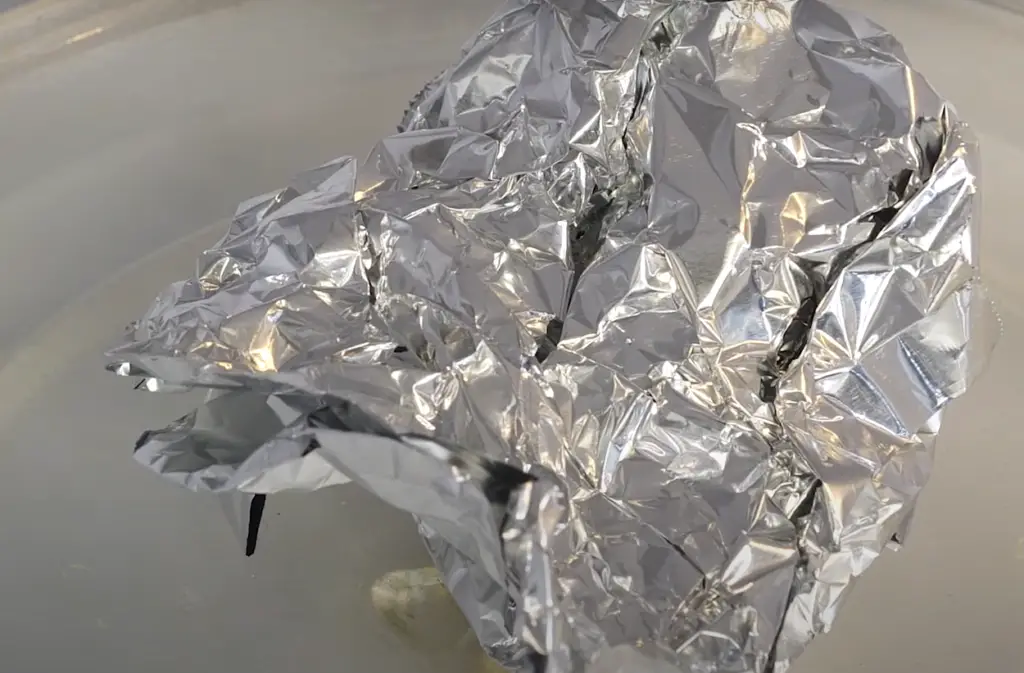
So, the key properties of food grade foil are:
- does not deform easily;
- does not melt;
- does not cause allergies;
- does not react to low temperatures;
- safe, can come into contact with food;
- chemically inert;
- is able to accumulate heat, so it is used for baking food in the oven;
- protects food wrapped in it from dust, bacteria and moisture. [6]
What Are the Types of Aluminum Foil?
Aluminum foil is available in standard, heavy-duty, and extra-heavy duty varieties. Depending on the product you’re cooking, your microwave’s wattage, and the desired result, you may want to use a thicker grade of aluminum foil.
Extra-heavy duty aluminum foil can measure up to 0.0217 inches thick but should only be used for special applications that require a stronger barrier or insulation from heat than either of the other two types of aluminum foils offer. [7]
What If Putting Metal in the Microwave?
Do you ever wonder what will happen if you place items such as dishes or plastic cups in the microwave? But this is not always a successful endeavor. Unfortunately, in many cases it can lead to an explosion, fire or electric shock. The same is true for metal objects in the microwave.
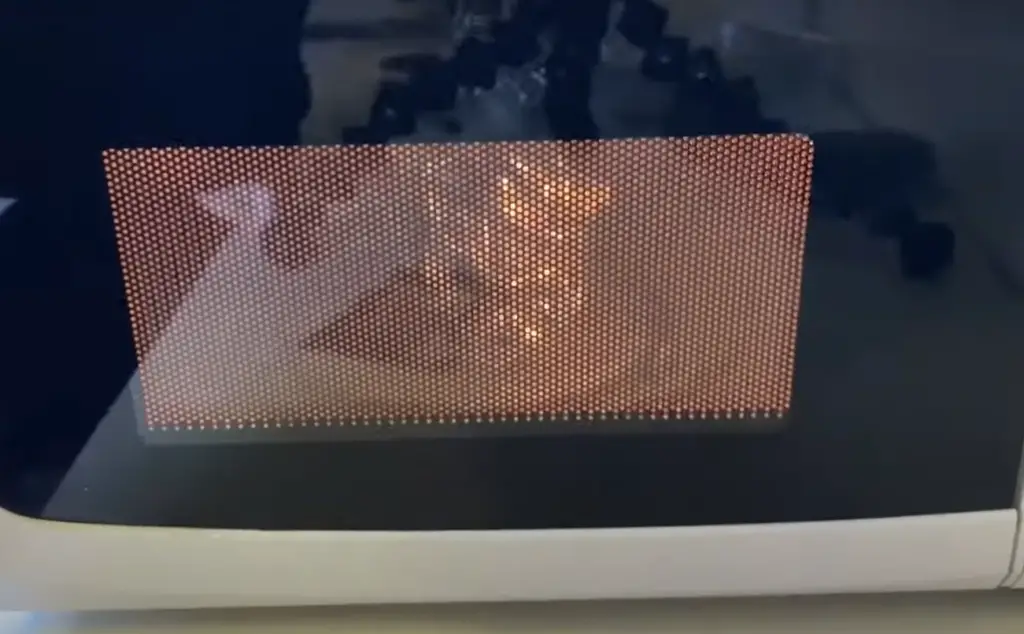
Metal objects such as forks, knives, spoons, aluminum foil or other metal utensils should never be placed in a microwave oven. When metal is placed inside the oven, it can cause sparks to fly and potentially create a fire. Additionally, microwaves do not penetrate metal containers, so any food that is stored in a metal container should never be placed in the microwave either.
Never place metals in a microwave oven, as they can produce sparking. Microwaves reflect off the shiny surface of aluminum foil. This causes currents of electricity that can spark and potentially ignite whatever it’s in contact with. As a result, food may end up getting burned or worse: your microwave could catch on fire! To ensure safety, do not use aluminum foil or other metal objects when cooking in a microwave oven.
What Metal Can You Put In A Microwave?
The answer to this question depends on the type of metal. Metals like stainless steel and iron are generally safe to put in the microwave, however they should still be used with caution and should never touch the walls inside the oven.
If you have any doubts about whether a certain metal is suitable for microwaving, check your appliance’s manual before using it. Additionally, make sure that all pieces of metal you place in the microwave are smaller than 6 inches to avoid sparking or starting a fire. [8]
How Does Foil Behave in the Microwave?
When it comes to aluminum foil, people often ask whether they can safely use it in the microwave.
The thin metal has a high risk of causing arcing, which means that sparks will fly off the foil as the microwaves heat it up. It’s bad for the food as well as for your appliances.When heated, aluminum foil can also create tiny sparks that can burn small holes in the interior of your appliance over time. This damage could eventually lead to a safety hazard and render unusable.
Is It Worth Using Aluminum Foil in Cooking – Pros and Cons
Aluminum foil is a common kitchen staple for many households, but is it worth using in the microwave? It’s an important question to ask, as aluminum foil isn’t just used for wrapping leftovers – it can also be used for cooking and baking. Let’s take a look at the pros and cons of using aluminum foil when microwaving your food.
Pros:
- It helps keep food moist while cooking, which is especially helpful when reheating foods that may otherwise dry out quickly;
- It also prevents splatters from occurring inside your microwave, reducing clean up time afterwards;
- Apply it to create makeshift containers to cook certain foods in the microwave, such as steaming vegetables or baking potatoes.
Cons:
- Aluminum foil can cause fire if it comes into contact with metal components of microwaves;
- Reheating food wrapped in aluminum foil may result in uneven heating which can lead to undercooked spots on your food;
- Aluminum foil is not a good choice for cooking fatty or greasy foods, as fat droplets can stick to the sides of the foil and potentially catch on fire inside the microwave. [9]
While there are some benefits to using aluminum foil when microwaving your food, it’s important to be aware of its potential hazards and take extra caution when doing so. Whenever possible, use microwave-safe containers, or other appropriate cookware for your particular microwave. This will help ensure your food is cooked safely and evenly.
How to Know Whether Aluminum Foil Is Safe to Use in the Microwave?
To determine if aluminum foil is safe to use in the microwave, always consult the manual for your particular model before operating it. Most microwaves will specify whether or not aluminum foil can be used and provide instructions on how to do so safely. Additionally, some newer models are designed to prevent sparks, which makes them safer than older models. It’s important to exercise caution when using a microwave and avoid putting any materials other than those intended for use by the manufacturer into the oven.
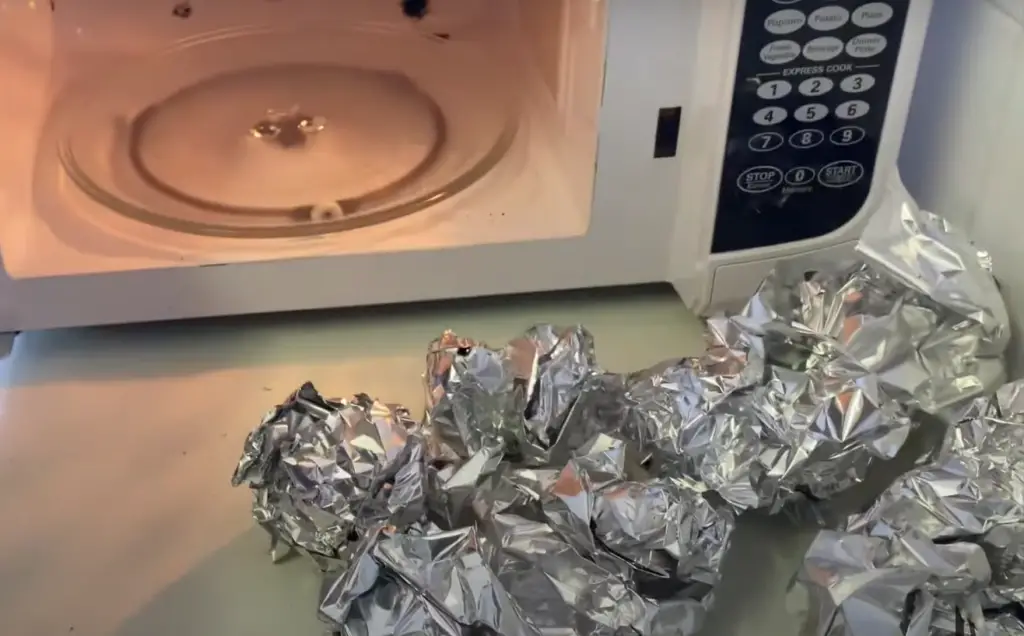
Let’s recap a bit and determine how to make sure it’s safe to put foil in the microwave. Remember the following rules:
- Check the manufacturer’s instructions – most microwaves come with specific directions on which materials are safe to use in them;
- Keep the amount of aluminum foil to a minimum – large pieces of foil should not be used, and small pieces should not touch any metal components inside the oven;
- Make sure that no edges or crumpled parts are exposed – these can cause arcing (sparking) and even fire;
- Be extra cautious with fatty and greasy foods – they can stick to the foil and potentially catch on fire;
- Always use microwave-safe containers or cookware whenever possible.
When used properly in the microwave, aluminum foil can be a beneficial kitchen tool. Just make sure you follow manufacturer’s instructions for your particular model before using aluminum foil in your appliance. This way, you can cook safely and efficiently while enjoying delicious meals at home!
Tips for Using Foil Safely in the Microwave
If the foil is still suitable for the microwave, then you need to take care that the heating process is completely safe. This should be done in spite of the permission to use, in order to avoid a rapid breakdown of the appliance.
Here are some tips:
- Keep a close eye on the food when it’s cooking and ensure that the foil doesn’t bend or start to smoke.
- Use smaller pieces of foil as larger ones can cause sparks, which may damage your microwave.
- Always keep a distance of at least one inch between the aluminum foil and the walls of your oven! This will reduce risk of arcing and other damage to your appliance.
- If you’re heating something with high fat content, avoid using thick layers of aluminum foil as this may cause more serious arcing due to fatty residues left on the surface of the film.
- Make sure that whatever is being heated is not touching the aluminum foil, as this can cause arcing and damage to your oven.
- Avoid using crumpled aluminum foil inside the microwave.
- Always keep the bottom of any containers covered with either glass or plastic to avoid direct contact between food and metal as this could lead to arcing.
- Make sure that aluminum foil does not overlap itself when placed inside a container for microwaving; overlapping pieces of foil may create sparks during cooking which will damage both your appliance and also whatever is being heated up!
- After all, if you have doubts about whether it’s safe enough to microwave something, it’s better not to do it at all. Better safe than sorry! [10]
FAQs
What happens when you put aluminum foil in the microwave?
When aluminum foil is placed in the microwave, the metal can reflect and absorb the microwaves, which can cause sparks and may even lead to a fire. Additionally, the sharp edges of the foil can also create arcs of electricity inside your microwave.
What is an interesting fact about foil?
An interesting fact about aluminum foil is that it was accidentally discovered in 1910. It happened when a factory worker noticed some scrap aluminum clinging to the roller of a machine. From there, the use of aluminum foil in many different applications was born!
Why is an aluminum microwave safe?
Aluminum microwaves are safe because they are designed to prevent sparks from occurring when using aluminum foil in the oven. Additionally, some newer models have a “metal detector” feature which will sound an alarm if metal is detected in the interior of the oven.
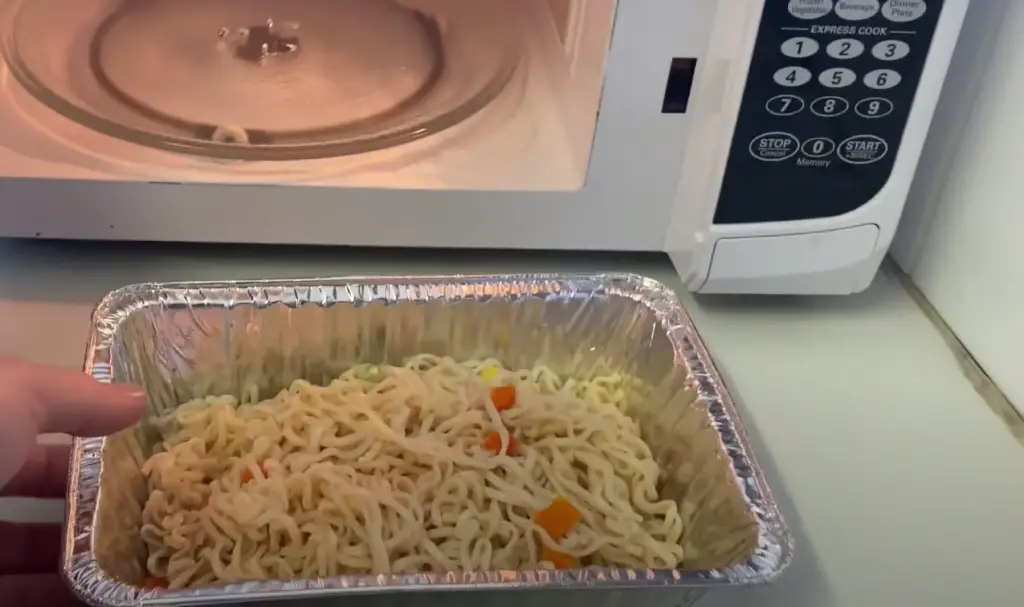
This helps ensure that no metal objects come into contact with any walls of the oven and can help minimize any risk of creating sparks or starting a fire. It’s important to exercise caution when using any material with your microwave and always read the manual for your particular model before operating it. Doing so will help ensure that the microwave is used safely and according to instructions.
Why do we not put metal or foil into a microwave?
This is because the metal reflects microwaves, causing them to bounce around inside the appliance. These reflections build up and can cause sparks, which can damage the interior of the microwave, as well as hurt you! If you do need to heat something that has a metal or foil component in it – such as pizza with cheese and crust – make sure there are no exposed edges. That way, if any sparks occur, they will be contained within your food item.
Useful Video: Can You Microwave Aluminium Foil? Will It Catch Fire?
Conclusion
Aluminum foil is a kitchen essential that serves multiple purposes. While it can be used in convenient ways in the microwave, it’s important to take safety precautions and avoid using overly large pieces of foil. Avoiding rust, using smaller pieces for better coverage, removing wrinkled pieces, not distorting the shape of food packages—all these tips will help you make the most out of aluminum foil use in your microwave oven! Remember: whether you’re using a makeshift splatter guard or tying up leftovers for storage, aluminum foil is an excellent trusty companion in the cooking world. Be sure to incorporate its versatile uses into your kitchen routine—in the microwave oven and beyond! And if ever you are uncertain on how to use aluminum foil in specific ways, just refer back to this handy guide filled with helpful advice and friendly reminders for safe usage.
References:
- https://innovativefoodprocessing.no/en/artikkel/how-do-microwaves-work
- https://studiousguy.com/microwave-oven-working-principle/
- https://blog.thepipingmart.com/metals/advantages-of-aluminium-foil/
- https://www.alufoil.org/Alufoil-Production
- http://www.madehow.com/Volume-1/Aluminum-Foil.html
- https://www.alumhm.com/a/what-are-the-main-properties-of-food-grade-aluminum-foil.html
- https://www.lacademie.com/heavy-duty-aluminum-foil-vs-regular/
- https://cookanyday.com/blogs/news/is-metal-safe-in-microwave
- https://www.healthline.com/nutrition/how-to-reheat-leftovers#general-guidelines
- https://www.lacademie.com/can-aluminum-foil-go-in-the-microwave/

